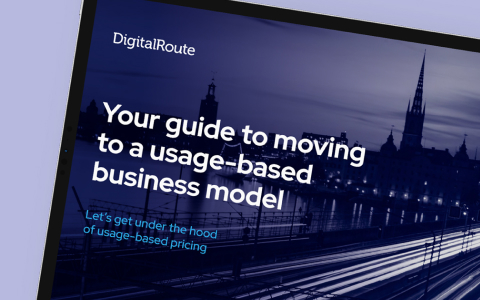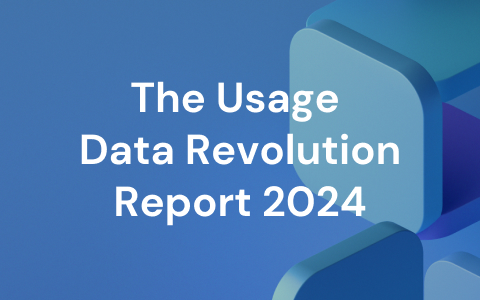Recurring Revenue
Recurring revenue is revenue generated on an ongoing basis from products or services, often in the form of a subscription.
What Is Recurring Revenue?
Recurring revenue is the income a business earns regularly from ongoing subscriptions, memberships, contracts, or other long-term arrangements. It offers stability and predictability to a company’s finances, as it is expected to continue in the future. Examples of recurring revenue include software subscriptions, rental fees, maintenance contracts, and subscription-based services.

What Are the Recurring Revenue Models?
There are several types of recurring revenue models that businesses can utilize to generate a steady stream of income. Some common models include:
Subscription-Based
In this model, customers pay a flat fee on a recurring basis to access a product or service. This model is commonly used in industries such as publishing, streaming platforms, and Software-as-a-Service (SaaS) businesses
Usage-Based or Consumption-Based
This model charges customers based on their usage or consumption of a product or service. Examples include utility companies charging based on consumption of electricity or water, or cloud computing providers charging based on data storage or usage.
Tiered Pricing
Businesses can offer multiple levels of pricing and features based on different tiers, allowing customers to choose the level that best suits their needs. This model is commonly used by software companies and telecommunications providers.
Hybrid Pricing
In a hybrid pricing model, businesses have the flexibility to offer customers a combination of pricing options. This can include a recurring subscription fee for ongoing access to a product or service, along with additional charges based on usage, features, or customization. By combining different pricing strategies, businesses can cater to a diverse range of customer needs and preferences. This model is common with SaaS companies.
What Are the Key Benefits of Adopting a Recurring Revenue Model?
Predictable and Stable Cash Flow
Recurring revenue models provide businesses with a steady and predictable stream of income. This predictability allows for better financial planning, investment, and overall business management.
Customer Loyalty and Retention
By offering subscription-based services, recurring revenue models can encourage customer loyalty. Customers who subscribe to a product or service are more likely to continue using it, resulting in higher customer retention rates.
Enhanced Customer Lifetime Value
Recurring revenue models allow businesses to build long-term relationships with customers, leading to higher customer lifetime value. These models enable businesses to continuously engage with customers, offer additional value, upsell or cross-sell products or services, and increase revenue over time.
Scalability and Growth Opportunities
With a recurring revenue model, businesses have the potential for scalable and sustainable growth. As the customer base expands, revenue grows proportionally without the need for acquiring new customers for every sale. This scalability allows businesses to invest in business model innovation, customer acquisition, and other growth initiatives.
Improved Customer Insights
Recurring revenue models allow businesses to gather valuable customer data over time. Through ongoing subscriptions or memberships, businesses can gain insights into customer preferences, behavior, and usage patterns. This data can be used to make informed business decisions, personalize offerings, and improve overall marketing and sales strategies.
Reduced Sales and Marketing Costs
With a customer base that renews or subscribes on an ongoing basis, businesses can reduce the need for constant customer acquisition efforts and allocate resources towards retention and upselling initiatives.
Flexibility in Pricing and Offerings
Businesses can experiment with different pricing strategies, business models, levels of access, or additional services to cater to different customer segments. This flexibility enables businesses to customize offerings to fit various customer needs and preferences.
Continuous Product Improvement
Ongoing subscription revenue allows for regular updates, bug fixes, and feature enhancements based on customer feedback and market demands. This iterative approach to product development keeps the products up-to-date and relevant, providing customers with a consistently improved user experience.
What Are the Key Success Metrics in Recurring Revenue Models?
In recurring revenue models, there are several key metrics that provide valuable insights into the health and performance of the business. These metrics help assess the overall success, growth, and profitability of a recurring revenue model.
Monthly Recurring Revenue (MRR)
MRR is a key metric because it provides a clear view of the company’s predictable revenue stream and growth potential on a month-to-month basis. Monitoring MRR helps track the effectiveness of sales and marketing efforts, customer acquisition, and revenue stability over time.
Annual Recurring Revenue (ARR)
ARR is crucial for evaluating the long-term revenue potential and predictability of the business. It provides a more comprehensive view of the company’s financial performance and growth. Tracking ARR helps in measuring the success of customer retention and expansion strategies, providing insight into the overall health of the recurring revenue model.
Churn Rate
Churn rate measures the rate at which customers cancel or do not renew their subscriptions or contracts. High churn can significantly impact revenue and profitability, making it essential to monitor and reduce churn. By measuring and understanding churn rate, companies can identify reasons why customers are leaving and take proactive steps to improve customer satisfaction, retention, and revenue stability.
Customer Lifetime Value (CLTV)
CLTV represents the total revenue a business can expect to generate from a customer throughout their entire relationship with the company. Calculating CLTV helps determine the value of acquiring and retaining customers. By understanding CLTV, businesses can allocate resources wisely, make informed decisions about customer acquisition costs, and focus on strategies that maximize customer lifetime value.
Average Revenue Per User (ARPU)
ARPU calculates the average revenue generated per user or customer. ARPU provides insights into the revenue potential of each customer and helps evaluate pricing strategies, upselling and cross-selling opportunities, and overall revenue growth. Monitoring ARPU helps identify trends, optimize pricing, and identify areas for revenue growth and expansion.
Gross Margins
Gross margins measure the profitability of the recurring revenue model. By tracking gross margins, companies can assess the financial viability and sustainability of their business model. Monitoring gross margins is crucial for identifying the cost structure, optimizing pricing, controlling expenses, and ensuring adequate profitability to support business growth and investment.
It’s important to note that these metrics may vary depending on the specific industry and business model. Companies should identify their own key metrics based on their unique needs, goals, and revenue model.
What Are the Challenges and Limitations with Recurring Revenue Models?
Recurring revenue models certainly have their benefits, but they also come with a few challenges that businesses need to consider. Here are some common challenges with recurring revenue models:
Initial Cash Flow
Unlike upfront payment models, recurring revenue models may take time to generate significant cash flow. Businesses need to manage their cash flow effectively during the early stages when customer acquisition is still ramping up.
Cost of Customer Acquisition
While recurring revenue models can lead to lower customer acquisition costs in the long term, there can still be initial costs associated with acquiring customers. Businesses need to invest in marketing, sales, and customer onboarding to attract new customers and move them through the customer lifecycle effectively.
Pricing and Packaging Complexity
Determining the right pricing and packaging structure for a recurring revenue model can be challenging. It requires careful consideration of factors like customer segmentation, value proposition, competitive analysis, and market dynamics. Iterative adjustments may be necessary to find the optimal pricing strategy.
Payment Processing and Billing Management
Managing recurring payments and billing processes can be complex, especially as the customer base and pricing complexity increases. Ensuring accurate billing, managing subscription changes, handling failed payments, and integrating with payment gateways require dedicated systems and resources.
Usage Data Volume and Complexity
As companies mature in their pricing strategies and grow their user base, ensuring the accuracy and completeness of the usage data processed will become increasingly challenging without the right solutions that are adaptable and scalable in place. The integration of various data sources to obtain a holistic view of customer behavior and usage patterns, and processing large volumes of data in real-time, among others, are significant technical challenges.
Conclusion
Recurring revenue is a vital aspect of a business model that provides stability, predictability, and growth opportunities. It offers benefits such as predictable cash flow, customer loyalty, enhanced customer lifetime value, scalability, improved customer insights, reduced sales and marketing costs, flexibility in pricing and offerings, and continuous product improvement.
Key success metrics for recurring revenue models include MRR, ARR, churn rate, CLTV, ARPU, and gross margins.
There are also challenges and limitations that businesses need to consider, such as initial cash flow, cost of customer acquisition, pricing and packaging complexity, payment processing and billing management, and usage data volume and complexity. Despite these challenges, recurring revenue models remain a valuable approach for businesses looking for sustainable growth and long-term success.
People also ask
What's the difference between recurring and reoccurring revenue?
Recurring revenue is predictable income expected to continue regularly into the foreseeable future, typically earned with subscription-based or SaaS businesses. Reoccurring revenue, on the other hand, refers to income that a business can periodically expect but doesn't follow a regular, predictable pattern like recurring revenue. An example might be seasonal sales that happen at irregular intervals.
What is the difference between ARR and recurring revenue?
ARR stands for Annual Recurring Revenue and is a subset of total recurring revenue. It specifically measures the revenue that a business expects to receive every year from its customers for providing them with products or services. Recurring revenue includes all predictable revenue on any time basis–it could be monthly, quarterly, or annually.
What is the difference between recurring revenue and profit?
Recurring revenue is the predictable income a business regularly generates through its operations, for example, from subscription fees. Profit, on the other hand, is the income that remains after all business expenses, taxes, and costs have been deducted from the total revenue. It's important to note that while high recurring revenue can be a good indicator of business stability, it doesn't necessarily mean the business is profiting if the expenses exceed this revenue.
What is an example of monthly recurring revenue?
Monthly Recurring Revenue (MRR) is the predictable income a business expects to receive each month. For example, if a company provides a streaming service at a subscription fee of $10 per user per month, and it has 1000 subscribers, its MRR would be $10 multiplied by 1000, which equals $10,000. This amount is the predictable revenue the business would expect to receive each month from its streaming service.
How do you calculate recurring revenue?
To calculate recurring revenue, you identify all reliable revenue streams that repeat on a regular basis, such as monthly or annual subscriptions. For instance, if you have 100 customers paying a subscription of $50 per month, your monthly recurring revenue (MRR) would be 100 customers * $50, totaling $5000. For Annual Recurring Revenue (ARR), you would multiply MRR by 12.
Can recurring revenue decline over time?
Yes, recurring revenue can decline if customers cancel (churn) or downgrade their subscriptions, or if the business loses clients to competitors. This makes customer satisfaction and retention incredibly crucial in a business model based on recurring revenue.
Is recurring revenue the same as passive income?
While recurring revenue can sometimes be similar to passive income, as it generates a steady stream of earnings, they are not the same. Recurring revenue requires active customer acquisition and service delivery, while passive income is usually earned with minimal ongoing effort, such as earnings from rental properties or investments.
Relevant content
- BLOG: Recurring Revenue Models - The Enterprise Guide
- BLOG: Usage-Based Pricing Model Implementation, Challenges, and Solutions
- BLOG: Subscription Pricing Models - The 6 Most Common Explained
- PODCAST: Unravelling the Complexities of Usage Billing
- BLOG: How to Get Started with Subscription Pricing Models
- BLOG: Beyond MRR - Essential SaaS and Usage-Based Pricing-Specific Metrics
- PODCAST: Are You Mature Enough for Usage-Based Pricing?




